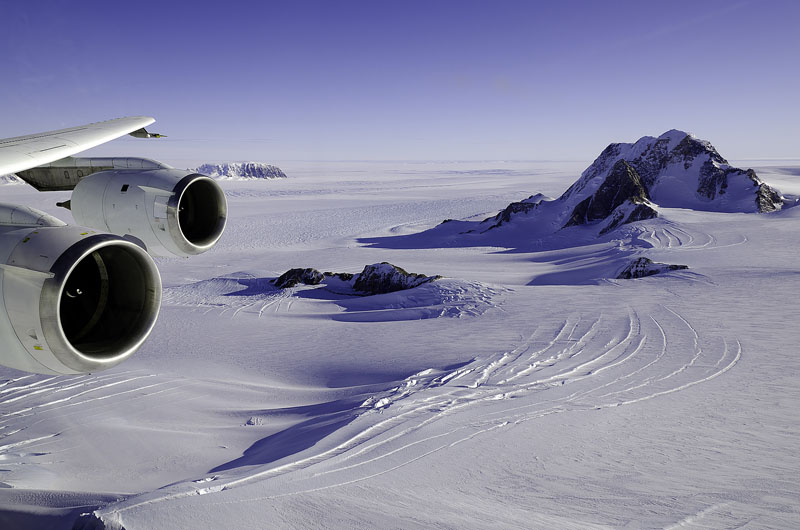Please note: Osher Rainforest will be closed for maintenance Jan. 14–16.
Science News
Fire and Ice
November 21, 2013
by Molly Michelson

What lies beneath thick Antarctic ice? According to a new study in Nature Geoscience, an active volcano!
Researchers from Washington University in St. Louis set up seismographs across Marie Byrd Land in West Antarctica in early 2010. The team wanted to use the equipment to weigh the ice sheet and help reconstruct Antarctica’s climate history—essentially by measuring the properties of the Earth’s mantle below.
But they discovered something completely different.
The seismographs measured a burst of seismic events in January and February 2010 and again in March 2011. Seismologist Amanda Lough thought this was very strange. “I started seeing events that kept occurring at the same location, which was odd. Then I realized they were close to some mountains—but not right on top of them.”
The close-by mountain range is the (romantically-named) Executive Committee Range, consisting of five mountains.
“My first thought was, ‘Okay, maybe it’s just coincidence,’” says Lough. “But then I looked more closely and realized that the mountains were actually volcanoes and there was an age progression to the range. The volcanoes closest to the seismic events were the youngest ones.”
Volcanic activity seemed to match the seismographs’ measurements. The events were weak and very low frequency, which strongly suggested they weren't tectonic in origin. The measurements also showed that almost all of the events had occurred at depths of 25 to 40 kilometers (15 to 25 miles below the surface). “A tectonic event might have a hypocenter 10 to 15 kilometers (6 to 9 miles) deep, but at 25 to 40 kilometers, these were way too deep,” Lough says.
Radar mapping showed a layer of ash buried under the ice. “They [the maps] see this layer all around our group of earthquakes and only in this area,” Lough says. “The best guess is that it came from Mt Waesche, an existing volcano near Mt Sidley. But that is also interesting because scientists had no idea when Mt. Waesche was last active, and the ash layer sets the age of the eruption at 8,000 years ago.” Very recent, in geologic terms.
Lough’s conclusion? A new volcano is forming beneath the ice. “We think there is probably a hot spot in the mantle here producing magma far beneath the surface.”
And the team believes it could eventually erupt. “In fact because the radar shows a mountain beneath the ice, I think it has erupted in the past, before the rumblings we recorded,” Lough explains.
It would take an enormous eruption to rupture the ice above, the seismologists say. But the heat of a typical eruption could melt a lot of ice, significantly affecting ice stream flow, according to the recent paper.
Who knew there was fire beneath all of that ice?
Image: Michael Studinger/NASA